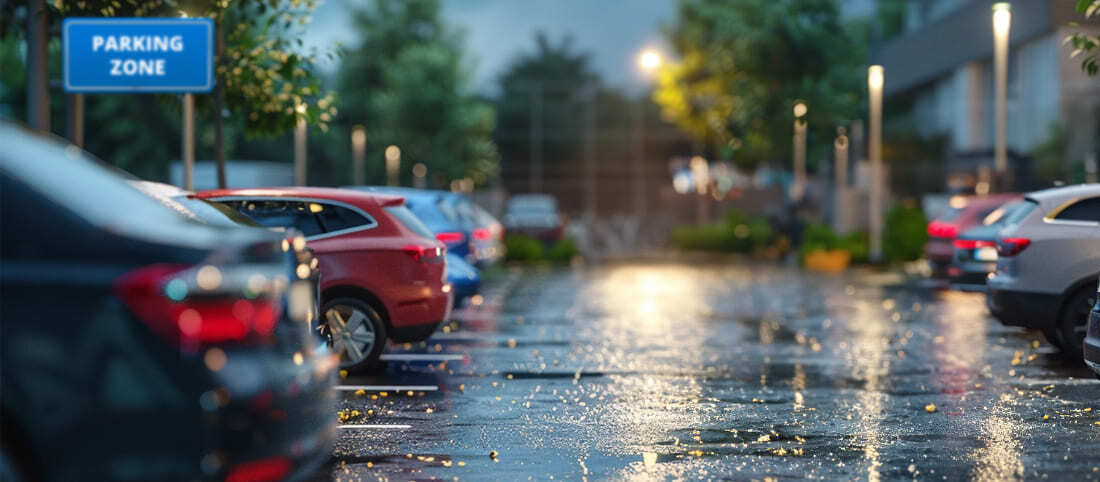Parking Equipment Installation Guide (2023): How To Choose & Install?
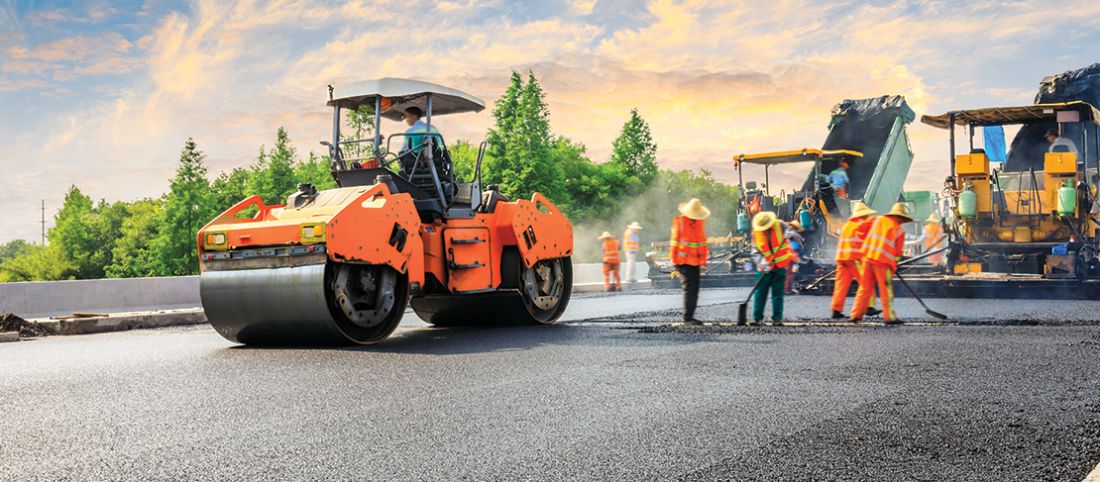
Choosing parking lot flooring can be a complex choice. There's a variety of factors that go into making this decision such as the type of asphalt, concrete, gravel, or stone. This can make choosing your parking lot protection confusing so let's make it easy by talking about parking lot protection options for some of the most common surfaces.
Table of contents:
Types Of Parking Lot Pavements
Concrete
Concrete surface is a common parking lot surface. It is easy to install and maintain, but it is also susceptible to damage from water and oil stains. Concrete protection can be installed in an overlapping or non-overlapping pattern. The overlapping pattern will protect against oil, while the non-overlapping pattern will protect against water. However, it’s not impervious to damage. If you have a high volume of traffic or snowfall, concrete may not be right for you. Concrete cracks with age and cold weather, which makes it more susceptible to potholes and other damage.
| Concrete pros | Concrete cons |
| Durable Long-lasting Easy to maintain | Heavy Difficult to use Notwithstanding extreme temperatures |
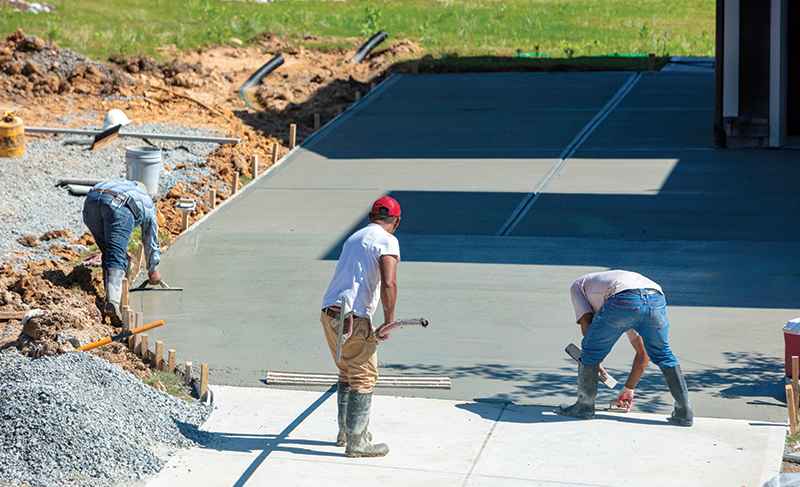
Asphalt
Asphalt is the most popular surface for parking lots. It is durable and cost-effective, but it is prone to cracks and subsiding. This can be avoided by applying a sealant or wearing course aggregate surfacing (WCS). When choosing your sealant, make sure that it has been tested for compatibility with all types of asphalt. The sealant will protect your parking lot from weathering, chemical staining, and sun damages. Asphalt parking lots are simple to maintain and repair, so they are ideal for business owners looking to save money on maintenance.
| Asphalt pros | Asphalt cons |
| Attractive Better traction and skid resistance Sustainable and stable foundation | High maintenance More expensive in terms of durability |
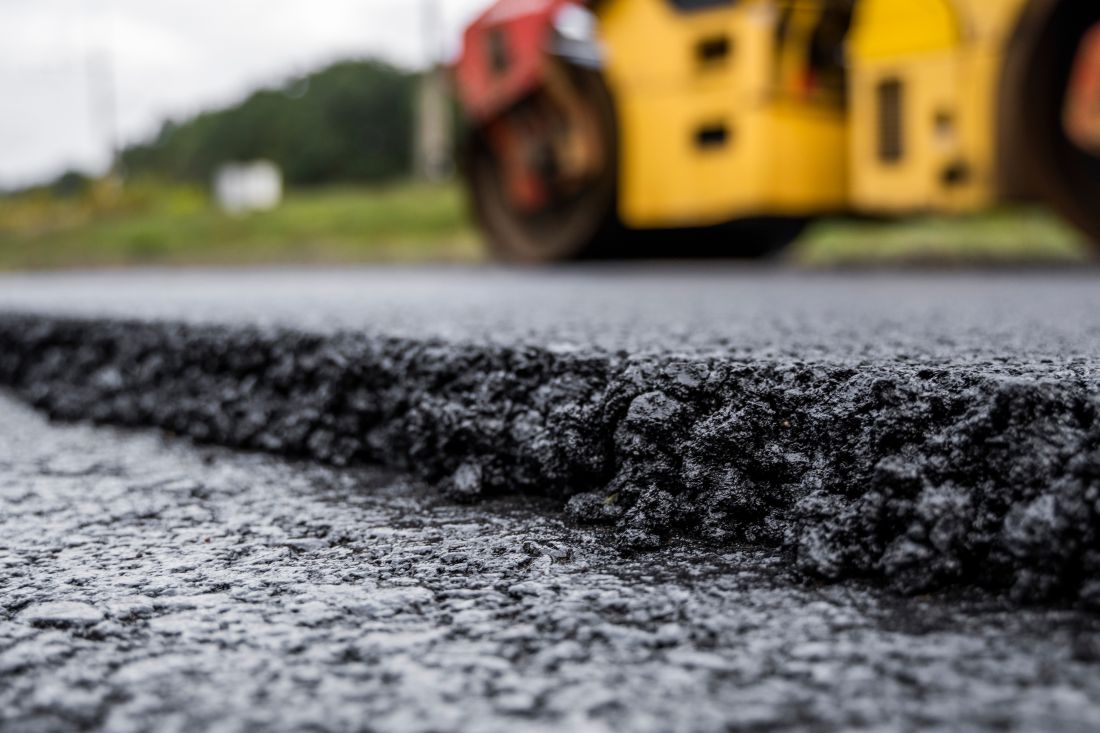
Permeable Pavers (Turf Stone)
This type of surface protection is made of honeycomb-shaped steel grids that are placed over the asphalt surface before it is paved. The steel grids provide drainage beneath the asphalt, which prevents it from becoming muddy or soft when it rains. The grids also allow grass seeds to grow through them, so they can be used as a landscaping tool as well as a protective measure for your vehicles. The turf stone pavers are popular in public parks, school playgrounds, and stadiums. It is a durable surface that can withstand a lot of foot traffic. However, due to its lower load-bearing capacity than conventional pavement, it is not suitable for high-traffic/high-speed locations.
| Turf stone pros | Turf stone cons |
| Reduces stormwater runoff | Needs to be watered and mowed Costs more than asphalt Shorter durability (10-15 yrs) |
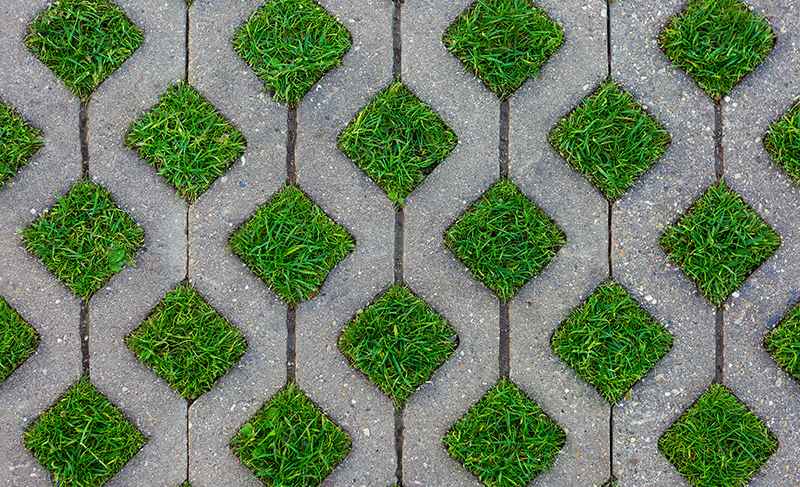
Paving Stone
Paving stone surface, as the name suggests, is made up of stones. These stones are usually small and are used to create a pattern on the road or parking lot. This type of surface is mostly seen in European countries, and it is very popular in America as well. The most important thing to consider when installing a paving stone surface is choosing the right size of the stone. You need to make sure that there is enough space between each stone so that they don’t get damaged by other vehicles when parked on top of them.
| Paving stone pros | Paving stone cons |
| Durable Variety of colors and finishes Easily repaired | Color changes and stains Can be difficult to DIY |

Gravel
Gravel surface is one that has been created using crushed rock and other natural materials. It can be made from crushed limestone, granite, or even recycled concrete. This type of surface is generally found on older parking lots or those that have been built in rural areas where asphalt would be too expensive to use. It is also sometimes used as a temporary measure while asphalt is being laid down. Gravel is the most common surface for parking lots in the United States because it is inexpensive, easy to install, and easy to maintain.
| Gravel pros | Gravel cons |
| Low- cost Easy to install Easy to fix potholes | Difficult to snowplow Hard to clean Gravel canwash away |
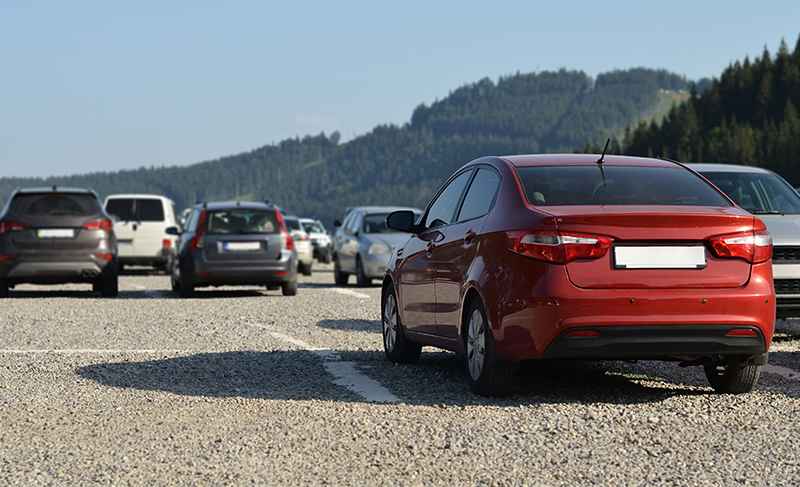
Types Of Parking Protection
There are different ways to protect your parking lot, and the product you choose will depend on what you need and how big your parking lot is. We’ve listed the top four parking protection products so you can weigh out all the possibilities and find the perfect solution for yourself.
Parking Barrier
Parking barrier is the easiest to install among the parking protection products and the most common choice for single parking spaces and private driveways. Parking barriers can be either manual or automatic (controlled by a remote control device or via smartphone). They are a perfect solution for anyone who wants to protect their parking spot from unauthorized use. All you need is a good drill, and a marker pen to mark the holes, a screwdriver for bolts and you’re all set!
- To choose the ideal parking barrier for your parking lot, check out the review guide for the best automatic parking barriers.
Parking Gate
This kind of parking lot protection is commonly used in urban areas where there are many people and vehicles passing through, such as shopping malls, office buildings, and apartment complexes. Automatic parking gate barriers provide 24/7 security while allowing vehicles to enter and exit your property at all times.
- Help yourself decide which parking gate to pick by reading the guide for automatic gate barriers.
Parking Chain
These barriers consist of two posts connected by a chain that extends around the entire perimeter of the lot. This type of barrier is ideal for parking lots or passages where there may not be enough space for other types of barriers such as bollards or parking gates.
Parking Bollard
Parking bollards are often used to keep cars out of places where people need to be safe from traffic. These barriers are typically used at city administration institutions, hospitals, and other public facilities where it’s important for pedestrians to feel safe without having to worry about being hit by a passing vehicle. It can also be used as parking protection if you find it more appealing than a classic parking barrier (for example, for rental vacation homes, luxury villas, etc.).
Parking Protection Installation
How To Install Parking Protection In Concrete
Parking protection installation on the concrete surface is a straightforward process. Since concrete is the most durable material of all of the above-mentioned materials, there is no need for additional work to set the base for the parking product.
Single space parking barriers can be easily drilled directly into the concrete and the whole process with preparation will take no more than 15 minutes.
Here’s the video of the installation process for the automatic parking barrier:
When it comes to larger parking protection products, it is always a good idea to pour the concrete into the foundation pit for better support. For instance, the base plate for the automatic gate barrier should have included concreted-in anchors in order to provide enough support for the gate. The current PGP cable (3x2.5mm2) needs to be passed through the central hole of the base plate.
How To Install Parking Protection In Asphalt
Asphalt can be unfavorable for parking protection installation due to its porosity. Larger parking products, like a gate or chain barrier, shouldn't be put directly into asphalt because the pressure could cause them to fall out over time. If you were to drill a gate barrier directly into asphalt, the anchor bolts used to secure the barrier to the ground would be damaged. Because asphalt is porous, these bolts would "slide" over time.
So what is the solution to this? Before installing a parking product, you need to dig a foundation pit and put in anchor bolts. For example, the automatic gate barrier will need four anchor bolts. Make sure to have one or more conduits for the passage of the electrical cabling. After that, you need to pour the concrete inside the pit and position the base plate.
When installing a gate or chain barrier, allow at least 10 cm of extra space on either side of the base plate.How To Install Parking Protection In Permeable Pavers (Turf Stones)
There are two ways of installing parking products in permeable paving:
- The turf stone pavers can be pulled directly from the ground, but the foundation pit will be uneven in shape.
- The second option is to measure the area where you want to install your parking protection. You will then use a concrete saw to cut a trough between each of your pavers.
The first option is, of course, easier, as you just need to pull out the turf stones from the ground and that’s it. There’s no additional work except digging out the pit for the base plate. If you decide to choose the second option, you will need a hammer and chisel or circular saw.
NOTE: If you cut dry with a circular saw, make sure to wear a protective mask as the silica dust from cutting may harm your health.
After you've finished cutting, the next stage is the same as the parking protection installation process for the asphalt.
How To Install Parking Protection In Paving Stone
Installing parking protection in paving stone can be an easy process if the stone is well attached to the foundation. If this is the case, then the parking products can be directly anchored in the stone.
However, make sure to pay attention to the thickness of the stone so that it is not smaller than the anchor itself. If the thickness of the stone is smaller than the anchor bolt, then the foundation pit and cement are required.
How To Install Parking Protection In Gravel
Gravel is the least recommended type of parking lot pavement because it is impractical for a parking protection installation. However, it is not impossible in all cases - if you install a gravel-only parking lot without pavers, it is necessary to dig a foundation pit and then fill it with concrete mix and put a base plate. In that case, the installation of the parking product should be easy from that point on.
If the gravel parking lot includes a permeable plastic grid system, the installation process may damage the grids; therefore, if you wish to install parking protection later, it is best to avoid implementing a plastic grid system in the first place.
Proper Planning is the Key to a Good Parking Lot
With this guide, you now have all the information you need to choose the right parking equipment and ensure it's installed correctly, along with a suitable pavement for your parking lot or private driveway. We hope that you have found the information in this guide helpful and informative and that it will assist you in creating a secure, efficient, and convenient parking lot. Don't hesitate to refer back to this guide whenever you need it, and remember that when it comes to parking equipment and pavement installation, proper planning and attention to detail are key to success!
